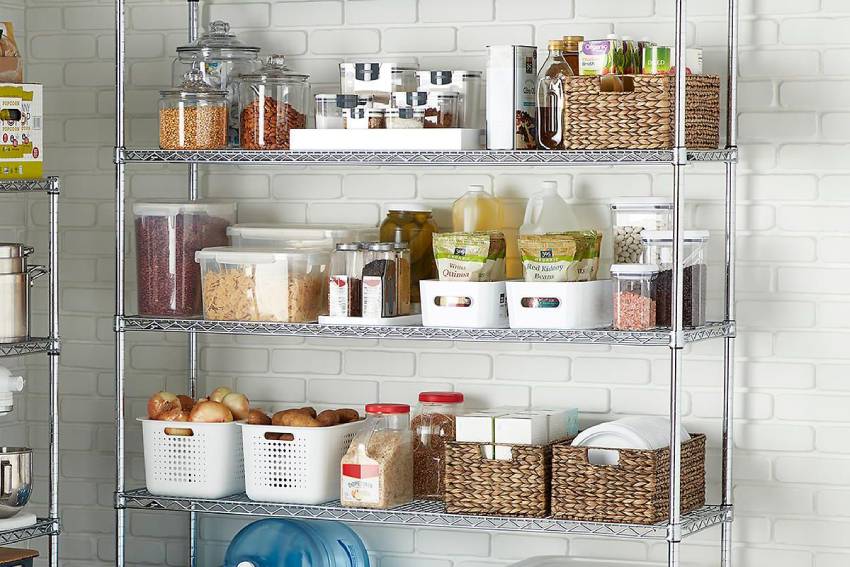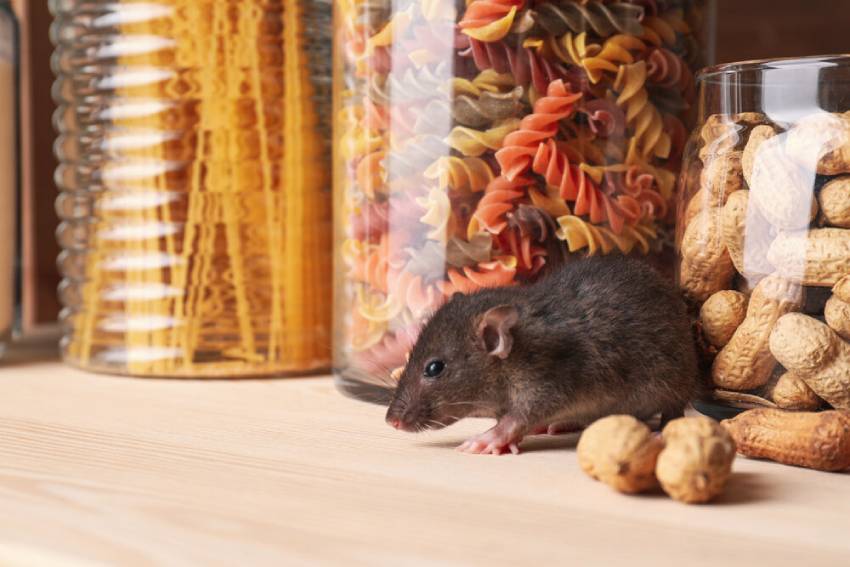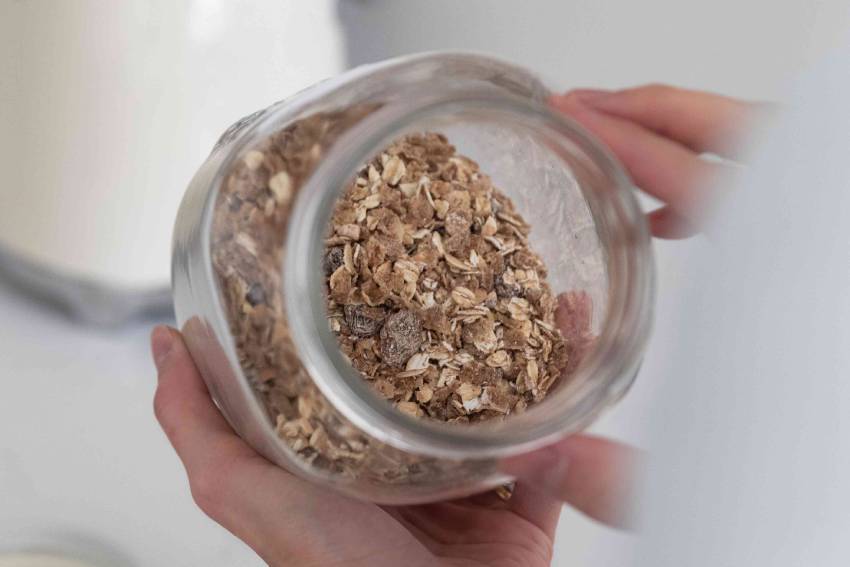Kitchen pantries might seem old-fashioned, but they’re enjoying a renaissance in recent years. A pantry is a great place to keep your dry goods organized, without taking up valuable cupboard space in your kitchen. Follow our Pro tips on how to clean a pantry to keep your pantry neat, preserve your food, and make life in the kitchen so much easier.
How To Clean and Organize a Kitchen Pantry
Why pantry cleaning matters
You might think you don’t need to clean your pantry, but it’s a good idea to give it a good clear-out once a month or so. This will help you stay on top of the food you’ve got in your pantry and help reduce waste. Regular cleaning is also important to keep pests like weevils and mice away.
How to clean a pantry
It couldn’t be easier to clean your pantry. Just follow these Pro tips!
Step 1: Sort through your pantry and throw away any expired food
Step 2: Donate any food that you know you’re not going to use
Step 3: Empty all the shelves and clean them with an all-purpose cleaner
Step 4: Use liners, parchment paper, contact paper, or old wallpaper to line the shelves
Step 5: Replace the food on the shelves
Step 6: Vacuum or mop the pantry floor
That’s all there is to it. But for the most optimal use of your pantry, it also pays to keep the contents organized as well as clean.

How to organize a kitchen pantry
Organizing a pantry is the best way to help keep your pantry tidy and make the most of your food. There’s nothing more annoying than finding an expensive ingredient gone stale at the back of a shelf, or discovering you’ve bought more of something than you know how to use. With these Pro tips, your pantry will be organized in no time!
- Position food based on how you use it
Keep the items you use the most on the most accessible shelves. That way you won’t be constantly moving things out of the way to get to what you want.
- Keep similar foods together
Put all your breakfast cereals on the same shelf. Do the same with tinned fruit and vegetables, different types of flour, snacks, spices, and any other similar foods. That way even if you don’t know exactly where something is, you know where to look for it.
- Use transparent canisters for open foods
Keep anything you’ve opened fresh with air-tight canisters. Using transparent storage containers makes it easier to identify the contents, and lets you see if something’s running out. Keeping your food in canisters can also keep bugs at bay.
- Add door shelves to maximize space
Purchase a cheap wire rack to hang over your pantry door, and use it to store condiments, spices, and other small jars.
- Add a hamper with grabbable snacks
If you’ve got kids, you know the devastation they can wreak on even the neatest pantry! Place a hamper or box with grabbable snacks at eye height to keep things tidy.
- Keep fresher food at the back
When rotating and refilling your pantry, put the food with the longest expiration date at the back of the shelf. That way when you’re in a hurry, you’ll grab the oldest food first.
- Rethink how you label foods
We’ve all seen those Pinterest-perfect or Instagram-incredible pantries with neat labels on every canister. But do you really need to tell yourself where the pasta is when you can see it? Instead, use labels to note the expiration date of your products. And no need to buy a fancy label maker, washi tape looks just as cute, and won’t leave annoying sticker residue behind.
- Consider how you’ll use your food
Those cute mason jars are useless if you want to scoop food with a measuring cup that won’t fit inside the mouth. Before you spend a fortune on your pantry accessories, think about how you’ll use them to access your food. And don’t be afraid to change something if it isn’t working for you.
Pro Tip: Keep organizing! Learn how to declutter your house now.
How to organize a small pantry
If you’ve only got limited space for a pantry, it’s still worthwhile creating one. But you might have to get extra inventive with your storage solutions. Here are some quick tips to help!
- Use all the possible space with storage extenders for under shelves and the back of the door
- Use stackable bins instead of space-hogging canisters
- Put pull-out shelves under your bottom drawer
- Lazy susans make great storage solutions for condiments and jars
- Use stackable can racks to keep canned goods in order
Don’t be afraid to make your small pantry your own. Smart storage solutions designed for closets, offices and utility rooms can make great pantry storage items too! Cheap rolling shelves, folder organizers, and shelf dividers can all help keep your pantry neat and organized.
How to organize a pantry with deep shelves
If your pantry has deep shelves, you might have more storage space than most, but that can lead to products getting pushed to the back and forgotten about. The good news is, there are lots of helpful storage solutions for deep-shelved pantries, that will keep everything accessible when you need it. Here are some tips from our cleaning Pros for managing deep shelves.
- Use tiered stands to keep products visible
- Organize your pantry by product height, tallest at the back
- Can dispensers help bring your canned goods to the front
- Install pull-out shelves so you can easily access goods at the back
- Use baskets or bins to store items on your shelves
- Leave gaps so you can reach items at the back without having to move those at the front
Having too much storage space is a nice problem to have, but it can lead to a messy pantry and forgotten food. By following the above tips, you can keep your deep pantry organized.

How to organize a pantry with wire shelves
Wire shelves and racks are cheap and easy to install and are great for building a pantry on a budget. However they can also cause problems. The wire can bend, leading to unstable storage and falling food. Here’s how to handle wire shelves to create a tidy, stable pantry.
- Cut plexiglass to size and place it over the wire to create stable shelf surfaces
- Use baskets or bins to store items, instead of placing them directly on the shelves
- Invest in under-shelf racks to create more space between shelves
- Place heavier items near the bottom to keep shelving stable
Wire shelves offer some great pantry solutions, but they do come with some problems. By thinking about how you’re going to use your pantry, you can overcome these issues with clever storage ideas.

How to clean pantry after mice
No matter how clean and organized your pantry is, you could still end up with pests getting inside. Mice are a biohazard and can be incredibly destructive. To get your pantry back in order after mice have discovered it, follow these steps.
Step 1: Get rid of the mice and make sure they can’t come back
Step 2: Wear gloves and a mask to prevent touching or breathing droppings
Step 3: Take everything out of your pantry and discard the food
Step 4: Make a mixture of 1.5 cups of bleach to 1 gallon of water and spray everything down
Step 5: Use paper towels to remove any debris like chewed cardboard and droppings
Step 6: Sponge and mop every surface again in more bleach solution
Step 7: Dry the walls and shelves with paper towels
Step 8: Disinfect or throw away your cleaning supplies (mop head, sponge, cloths, etc.)
Step 9: Wash your hands with warm water and soap for at least 20 seconds
Remember, rodents walk in their pee. That means even if you think the box of spaghetti didn’t get touched, you can’t properly sanitize it. When it comes to sealed cans and jars, use your best judgment. You can disinfect them with the bleach solution, or you can throw them away.

How to clean pantry moths
Pantry moths often hitch a ride into your home in bags of dry goods like flour and rice. Decanting your goods into containers can help you identify and isolate these outbreaks and keep the moths contained. If you spot moths or larvae in your pantry, here’s what to do.
Step 1: Throw away any affected food in the outside trash can
Step 2: Carefully inspect other foods for signs of infestation — if in doubt, throw it out
Step 3: Don’t forget to look at cardboard packages and cans for larvae that have crawled away
Step 4: Disinfect everything with undiluted white vinegar
Step 5: Replace shelf liners and vacuum and clean your whole pantry
Step 6: Hang up muslin bags containing fresh bay leaves, lavender, cedar, or mint to help repel moths in future
Pantry moths are annoying pests, but generally not dangerous. However, if you do spot an infestation, it’s important to tackle it immediately to stop the moths from taking over your dry goods.
How to get rid of bugs in a food pantry
Pantry moths aren’t the only unwelcome visitors that can hitch a ride into your pantry. Gnats, flies, and more can all be a problem. However you can treat them by following the steps above. To prevent more bugs from getting into your pantry, keep your food in airtight containers and make sure to clean up crumbs or spills immediately.